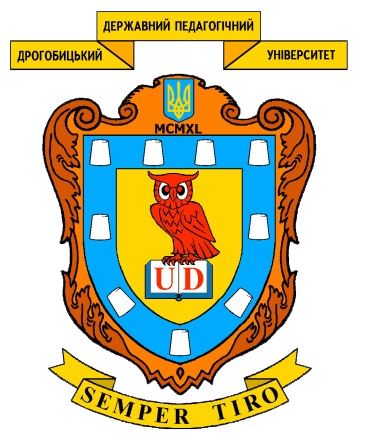БАБИН ЯР: ПАМ’ЯТЬ І СКЛАДНОЩІ МЕМОРІАЛІЗАЦІЇ (ПОГЛЯДИ ЗАХІДНИХ АНАЛІТИКІВ)
DOI:
https://doi.org/10.24919/2312-2595.7/49.234415Ключові слова:
Бабин Яр; меморіал; Голокост; пам’ятник; жертви; нацизм; антисемізм; сіонізм; музейАнотація
Анотація. Мета дослідження – простежити динаміку спроб меморіалізації, описану у працях західних авторів, місця трагедії відомого майже у всьому світі – Бабиного Яру.
Методологія дослідження. Методологія дослідження базується на органічному поєднанні методів історизму, послідовності, компаративізму, об’єктивності, системності, всебічності, що сприяє критичному осмисленню історіографічних джерел, пов’язаних з подіями у Бабиному Яру. Використовується також порівняльний, проблемно-хронологічний методи.
Наукова новизна полягає у тому, що залучено новітні історіографічні джерела західного походження, які з критичної і водночас здебільшого зваженої точки зору розглядають комплекс проблем, пов’язаних з історією подій у Бабиному Яру восени 1941 р., та подають складну амплітуду спроб меморіалізації цього історичного місця.
Висновки. У статті проаналізовано процес як певного замовчування, так і неодноразових спроб меморіалізації Бабиного Яру, щоб закарбувати в історичній пам’яті не лише України, але й людства події осені 1941 р. Наголошено, що історіографічні джерела західного походження свідчать про глибокий інтерес зарубіжних учених, аналітиків, журналістів, суспільних діячів до цих трагічних подій. Простежується динаміка спроб меморіалізації, описана у працях західних авторів, що значно пожвавилась на початку XXI ст. Підкреслено, що зарубіжні експерти, розглядаючи процес дебатів в Україні щодо проєктів Меморіального комплексу у Бабиному Яру, вказують на «змагання жертовностей». Авторка простежує аналіз тих суперечностей, які проявилися в українському суспільстві щодо геноцидних явищ 30‒40-х рр. ХХ ст. Авторка умовно виділяє три наукові напрями щодо вивчення історії подій та подробиць меморіалізації Бабиного Яру: перший – студії, що присвячені уточненню певних компонентів подій, які пов’язані з повсякденністю злочину; другий – дані стосовно державної політики радянського часу, яка замовчувала чи фальсифікувала події у Бабиному Яру, особливо намагання Кремля стерти поняття «єврейський Голокост» стосовно подій у Бабиному Яру, а також констатація зусиль частини радянської інтелігенції, яка не давала владі забути про цей злочин; третій – спроби меморіалізації Бабиного Яру, які особливо пожвавилися після 2015 р. і, зрештою, привели до реалізації Концепції комплексної меморіалізації Бабиного Яру. Фактично в основі цих дискусів – наявність «воєн пам’яті», які заважають формулюванню зваженої загальної токи зору, тому меморіалізація Бабиного Яру повинна проводитися з урахуванням поліетнічності України, не відкидаючи ідеї: лише євреїв і ромів знищували за ознакою національності. Авторка приходить до висновку, що квінтесенцією аналітиків Заходу є думка щодо необхідності завершення процесу меморіалізації Бабиного Яру.
Посилання
Babiy Yar. 75 let nazad… [Babyn Yar. 75 years ago…]. (2016). Retrieved from https://tverdyi-znak.livejournal.com/2703639.html [in Russian].
Berkhof, K. (2012). Babyn Yar: mistse naimasshtabnishoho rozstrilu yevreiv natsystamy v Radianskomu Soiuzi [Babyn Yar: the place a large-scale execution of Jews by the Nazis in the Soviet Union]. Babyn Yar: masove ubyvstvo i pamiat pro noho: materialy mizhnarodnoi naukovoi konferentsii ‒ Babyn Yar: mass murder and the memory of it: materials of the international scientific conference (pp. 8‒20). Kyiv [in Ukrainian].
Graf, Yu. (2005). Velikaya lozh XX veka. Mif o genotside evreev v period II Mirovoy voyny [The big lie of the 20th century. The myth of the genocide of the Jews during World War II]. Kiev: MAUP [in Russian].
Graf, Yu. (2017). Nakanune mirovoy katastrofy [On the eve of the global catastrophe]. Moskva: Litres [in Russian].
Hrynevych, V. (2017). Babyn Yar. Trahediia yevreiv: vid napiv- do povnoho zamovchuvannia [Babyn Yar. The tragedy of the Jews: from semi- to complete suppression]. Ukraina moderna: mizhnarodnyi intelektualnyi chasopys ‒ Ukraine of modernism: an international intellectual magazine. Retrieved from http://uamoderna.com/blogy/vladislav-grinevich/babyn-yar-1 [in Ukrainian].
Yevstafeva, T., & Nakhmanovich, V. (Comps.). (2004). Babiy Yar: chelovek, vlast, istoriya: dokumenty i materialy. Kn. 1: Istoricheskaya topografiya. Khronologiya sobytiy [Babyn Yar: person, power, history: documents and materials. Vol. 1: Historical topography. Chronology of events]. Kiev: Vneshtorgizdat [in Russian].
Kasianov, H. (2018). Past Continuous: Istorychna polityka 1980‒2000-kh: Ukraina ta susidy [Past Continuous: Historical politics of the 1980s – 2000s: Ukraine and its neighbors]. Kyiv: «Laurus»; Antropos-Lohos-Film [in Ukrainian].
Kolesnyk, O. (2014). Babyn Yar yak mistse pamiati: ohliad komemoratyvnykh praktyk i pamiatnykh znakiv [Babyn Yar as a place of memory: review of the commemorative practices and memorials]. Acta studiosa historica, 4, 146–167 [in Ukrainian].
Kruglov, A. (2011). Tragediya Babego Yara v nemetskikh dokumentakh [The tragedy of Babyn Yar in German documents]. Dnepropetrovsk: Tsentr «Tkuma»; ChP «Lira LTD» [in Russian].
Mykhailiuk, M. (2016). Babyn Yar yak memuarno-doslidnytske pole zakhidnoi istoriohrafii (do 75-i richnytsi yevreiskoi trahedii) [Babyn Yar as a memoir-research field of Western historiography (to the 75th anniversary of the Jewish tragedy)]. Viiskovo-istorychnyi meridian: elektronnyi naukovyi fakhovyi zhurnal ‒ Military-historical meridian: electronic scientific professional journal, 13, 5‒18. Retrieved from https://vim.gov.ua/pages/_journal_files/10.10.2016/pdf/VIM_13_2016_5-18.pdf [in Ukrainian].
Pastushenko, T. (2019). Prezentatsiia Kontseptsii kompleksnoi memorializatsii Babynoho Yaru [Presentation of the Concept of comprehensive memorialization of Babyn Yar]. Ukrainskyi istorychnyi zhurnal ‒ Ukrainian historical journal, 1, 208‒217 [in Ukrainian].
Romantsov, R. (2018). Holokost v istorychnii pamiati Lytvy ta Ukrainy 1991‒2017 [Holocaust in the historical memory of Lithuania and Ukraine 1991‒2017]. Problemy istorii Holokostu: ukrainskyi vymir ‒ Problems of Holocaust History: Ukrainian perspective, 10, 12‒41 [in Ukrainian].
Trakhtenberh, I.M. (2016). Babyn Yar. Mynule i sohodennia [Babyn Yar. Past and present]. Kyiv [in Ukrainian].
Tur, T. (2006). Pravda pro Babyn Yar: dokumentalne doslidzhennia [The truth about Babyn Yar: documentary research]. Kyiv [in Ukrainian].
Atkins, S.E. (2009). Holocaust Denial as an International Movement. Westport: ABC-CLIO.
Berkhoff, K. (2012). Babi Yar Site of Mass Murder, Ravine of Oblivion. Retrieved from https://www.ushmm.org/m/pdfs/Publication_OP_2011-02.pdf
Berkhoff, K. (2015a). "The Corpses in the Ravine were Women, Men, and Children": Written Testimonies from 1941 in the Babi Yar Massacre. Holocaust and Genocide Studies (Oxford), 29 (2), 251‒274.
Berkhoff, K. (2015b). Babi Yar. Retrieved from https://pure.knaw.nl/ws/files/1653911/Berkhoff-2015-BabiYar-OnlineEncyMasViolence.pdf.
Berkhoff, K. (2017). Six Concerns about the Babi Yar Holocaust Memorial Center. Kiev: Babi Yar Holocaust Memorial Center. Retrieved from http://babynyar.org/en/byhmc-news/posts/article/karel-berkgof-sist-pobouvan-sodo-memorialnogo-centru-golokostu-babin-ar.
Berkhoff, K. (2018). Basic Historical Narrative of the Babi Yar Holocaust Memorial Center. Kyiv. Retrieved from http://api.babiyar.org/uploads/files/fund/ff5be4721f4ef9d0cee21b34e17e8c05.pdf.
Bienert, O. (2011). Bericht: Internationale Konferenz "Babyn Jar: Geschichte und Erinnerung an das Massaker". Retrieved from http://lernen-aus-der-geschichte.de/Lernen-und-Lehren/content/10049.
Black, J. (2016). The Holocaust: History and Memory. Bloomington and Indianapolis: Indiana University Press.
Burakovskiy, A. (2011). Holocaust remembrance in Ukraine: memorialization of the Jewish tragedy at Babi Yar. Nationalities Papers: The Journal of Nationalism and Ethnicity, 39 (3), 371‒389.
Chernick, I. (2019, September 19). Antisemitic Іncidents Rampant in Recent Weeks across Ukraine. Jerusalem Post. Retrieved from https://www.jpost.com/diaspora/antisemitism/antisemitic-incidents-rampant-in-last-few-weeks-across-ukraine-602102.
Cohen, J. (2018, September 29). Ukraine is finally ready to memorialize its Holocaust past. Kyiv Post: Ukraine’s Global Voice. Retrieved from https://www.kyivpost.com/article/opinion/op-ed/josh-cohen-ukraine-is-finally-ready-to-memorialize-its-holocaust-past.html.
Czerny, B. (2004). Babij Yar. La mémoire et l’histoire. Génocides: Lieux (et non-lieux) de mémoire. Revue d’histoire de la Shoah, Le monde juif, 181, 61‒75.
Davidzon, V. (2015, September 17). Kiev’s Babi Yar Holocaust Memorial Torched; Assailant Remains At Large. Tablet. Retrieved from https://www.tabletmag.com/scroll/193632/kievs-babi-yar-holocaust-memorial-torched-assailant-remains-at-large.
Dawidowicz, L.S. (1981, September 27). Babi Yar’s Legacy. New York Times Magazine (Section 6, p. 48). Retrieved from https://www.nytimes.com/1981/09/27/magazine/babi-yar-s-legacy.html.
Feferman, K. (2009). Soviet Jewish Stepchild: The Holocaust in the Soviet Mindset, 1941‒1964. Saarbrücken: VDM Verlag.
Grüner, F. (2006). Die Tragödie von Babij Jar im sowjetischen Gedächtnis. Künstlerische Erinnerung versus offizielles Schweigen. Zerstörer des Schweigens: Formen künstlerischer Erinnerung an die nationalsozialistische Rassen- und Vernichtungspolitik in Osteuropa (s. 57‒96). Köln, Weimar, Wien: Böhlau.
Grüner, F., Heftrich, U., & Löwe, H-D. (2006). "Zerstörer des Schweigens": Formen künstlerischer Erinnerung an die nationalsozialistische Rassen- und Vernichtungspolitik in Osteuropa. Köln, Weimar, Wien: Böhlau.
Hausmann, G. (2016). 75 Jahre Babyn Jar: Sowjetische und postsowjetische Kontroversen um einen Gedenkort in Kiew von 1945 bis heute. Retrieved from https://erinnerung.hypotheses.org/647.
Herbert, U. (2016). Holocaust Research in Germany. German Yearbook of Contemporary History. Vol. 1: Holocaust and Memory in Europe (pp. 17‒48). De Gruyter Oldenbourg.
Khiterer, V. (2004, June 25). Babi Yar, the Tragedy of Kiev’s Jews. Brandeis Graduate Journal, 2, 1‒16.
Khiterer, V. (2016). Victor Nekrasov and the Babi Yar Massacre Commemoration. Achievements. Retrieved from achievementsnews.co.uk/history/5213-Victor-Nekrasov-and-the-Babi-Yar-massacre-commemoration-by-victoria-khiterer.
Kinstler, L. (2016, 30 September). "No Monument Stands Over Babi Yar" Seventy-five years after the mass slaughter of Kiev’s Jews, Ukraine begins a new memorial project. The Atlantic. Retrieved from https://www.theatlantic.com/international/archive/2016/09/Ukraine-yewish-babi-yar-russia-holocaust-germany-poroshenko/502517.
Kozloff, N. (2016). History of Vandalism: Welcome to Ukraine’s Historic Holocaust Site. Retrieved from http://nkozphoto.com/index.php/2016/12/03/a-history-of-vandalism-welcome-to-ukraines-historic-holocaust-site/
Kulka, O.D. (2017). Foreword. In H.-Ch. Jasch & Ch. Kreutzmüller (Eds.), The Participants: The Men of the Wannsee Conference (pp. XI‒XIX). New York, N.Y.; Oxford: Berghahn.
Kutsovska, G. (2019). Memorializing Babyn Yar: Politics of Memory and Commemoration of the Holocaust in Ukraine. Linköping University.
Majumdar, A. (2019). The Genocide and the Ukrainian Diaspora. European Journal of Research, 7, 4–27.
Makhortykh, M. (2018). Framing the Holocaust Online: Memory of the Babi Yar Massacres on Wikipedia. Studies in Russian, Eurasian and Central European New Media (digitalicons.org), 18, 67–94.
Mankoff, J. (2004). Babi Yar and the Struggle for Memory 1944‒2004. Ab Imperio, 2, 393–415.
Martin, B. (2013). Babi Yar: La commémoration impossible. Émulations: Revue des jeunes chercheurs en sciences sociales, 12, 67–79.
Moine, N., & Angell, J. (2011). Defining "war crimes against humanity" in the Soviet Union. Nazi arson of Soviet villages and the Soviet narrative on Jewish and non-Jewish Soviet war victims, 1941‒1947. Cahiers du monde russe, 52/2‒3, 441–473.
Prutsch, M.J. (2013). Europäisches Historisches Gedächtnis: Politik, Herausforderungen und Perspektiven. Brüssel: Europäisches Parlament.
Radchenko, Y. (2016). Babyn Yar: A site of massacres, (dis)remembrance and instrumentalisation. New Eastern Europe. Retrieved from http://neweasterneurope.eu/2016/10/11/babyn-yar-a-site-of-massacres-dis-remembrance-and-instrumentalisation/
Rapson, J. (2017). Topographies of Suffering: Buchenwald, Babi Yar, Lidice. Oxford: Berghahn Books.
Ryvchin, A. (2017, September 15). Remembering Babi Yar 76 years after the single largest massacre of Jews in the Holocaust, the site continues to inspire acts of humanity and courage. Tablet. Retrieved from https://www.tabletmag.com/sections/news/articles/remembering-babi-yar.
Schlemmer, Th., & Steinweis, A.E. (2016). Introduction. Holocaust and Memory in Europe (pp. 9‒15). Oldenbourg.
Sheldon, R. (1988). The Transformations of Babi Yar. In T.L. Thompson & R. Sheldon (Eds.), Soviet Society And Culture: Essays In Honor Of Vera S. Dunham (pp. 124‒161). Boulder, Colo: Westview Press.
Shrayer, M.D. (2011). Jewish-Russian Poets Bearing Witness to the Shoah, 1941‒1946: Textual Evidence and Preliminary Conclusions. In S. Garzonio (Ed.), Studies in Slavic Languages and Literatures: ICCEES Congress Stockholm 2010 Papers and Contributions (PECOB’S VOLUMES) (pp. 59‒119).
Sokol, S. (2017). Babi Yar as a Symbol of Holocaust Distortion in Post-Maidan Ukraine. Israel Journal of Foreign Affairs. Retrieved from https://www.academia.edu/35847806/Babi-Yar-as-a-symbol-of-holocaust-distortion-on-post-maidan-Ukraine.
Sokol, S. (2019, August 22). Netanyahu’s praise of Kyiv’s Holocaust remembrance only tells part of the story. The Times of Israel. Retrieved from https://www.timesofisrael.com/netanyahus-praise-of-kyivs-holocaust-remembrance-only-tells-part-of-the-story/
Spector, S. (1990). Extracts from the Babi Yar article. In Israel Gutman (Editor in Chief), Yad Vashem, Sifriat Hapoalim, Encyclopedia of the Holocaust. New York: MacMillan Publishing Company. Retrieved from www.zchor.org/BABIYAR.HTM.
Stadelmann, M. (2006). Von Leningrad nach Babij Jar. Dmitrij Šostakovics symphonische Auseinandersetzungen mit Krieg und Vernichtung in der Sowjetunion. In F. Grüner, U. Heftrich, H.-D. Löwe (Hrsg.), Zerstörer des Schweigens: Formen künstlerischer Erinnerung an die nationalsozialistische Rassen- und Vernichtungspolitik in Osteuropa (s. 419‒440). Köln et al: Böhlau Verlag.
Tabarovsky, I. (2016). Babi Yar: The Holocaust as Final Solution Began Here. Newsweek. Retrieved from https://www.newsweek.com/babi-yar-holocaust-final-solution-began-there-503523.
Tabarovsky, I. (2018, January 25). Is Ukraine’s Holocaust Memorial at Babi Yar in Trouble? Tablet. Retrieved from https://www.tabletmag.com/sections/news/articles/holocaust-memorial-babi-yar.
Tiedemann, H. (2011). Babi Yar: Critical Questions and Comments. Retrieved from www.vho.org/GB/Books/dth/fndbabiyar.html.
Vinocurov, J., Kipnis, Kh., & Levin, N. (Eds.). (1983). Babi Yar. Book of Remembrance. Philadelphia: Pub. House Peace, Inc.
Voronovici, A. (2018). At the Crossroads of "Memory Wars": Recent Debates on the Babi Yar Holocaust Memorial Center. Cultures of History Forum. Retrieved from https://digital.herder-institut.de/publications/frontdoor/deliver/index/docId/167/file/Voronovici_Recent_Debates_on_the_Babi_Y.pdf.
Zisels, J. (2018). What is Happening around Babyn Yar Today? Retrieved from https://khpg.org/en/index.php?id=1536010583.
##submission.downloads##
Опубліковано
Номер
Розділ
Ліцензія

Ця робота ліцензується відповідно до Creative Commons Attribution-NonCommercial-ShareAlike 4.0 International License.








